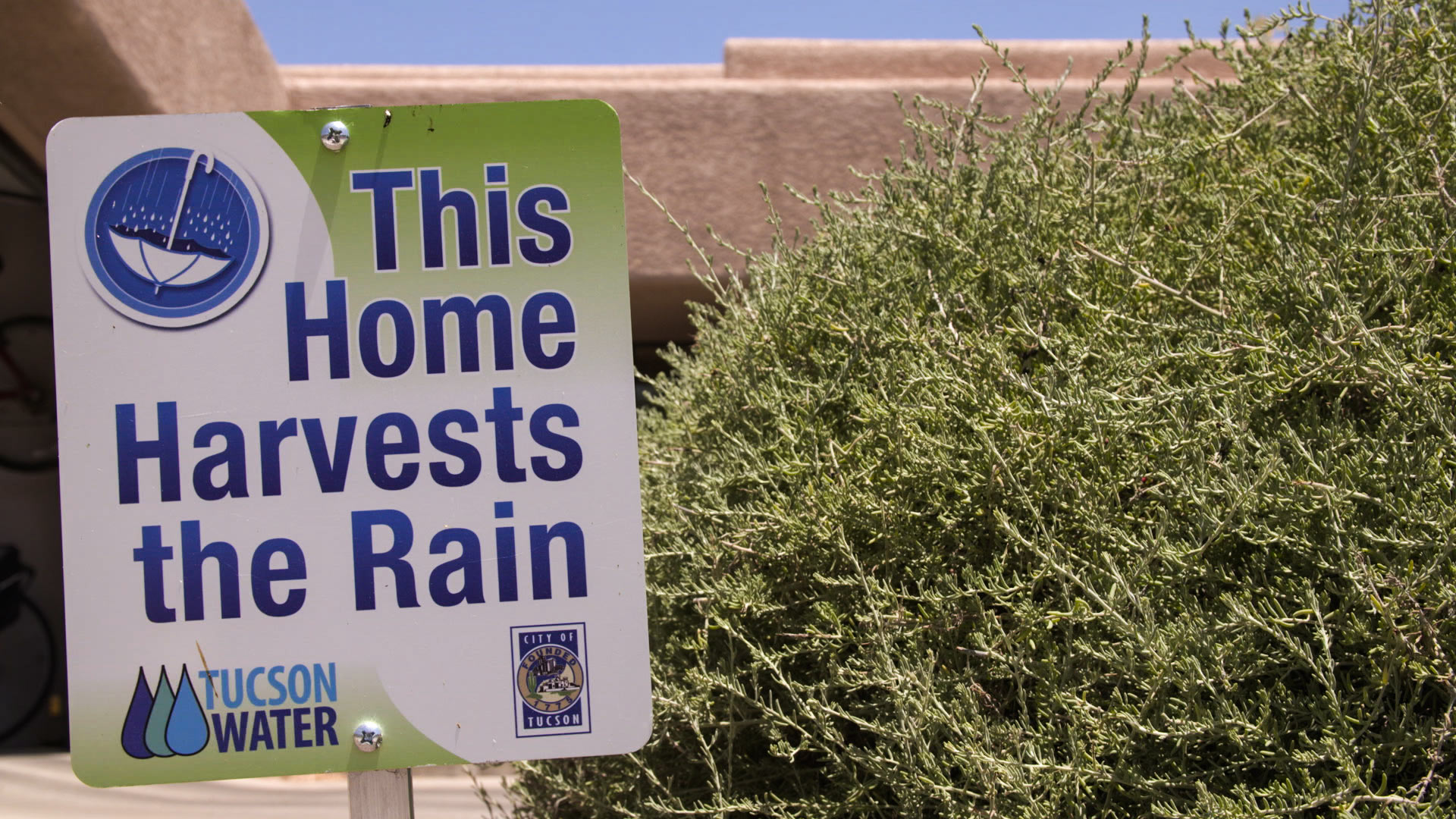 Many Southern Arizona residents employ water-saving techniques, like rainwater harvest.
Many Southern Arizona residents employ water-saving techniques, like rainwater harvest.
The Buzz for July 12, 2024

This is the second in a three-part series looking at the 3 Rs: recycle, reduce, reuse.
Deserts are often seen as the definition of a lack of resources. When an area lacks grocery stores, it's called a food desert. Areas without access to broadband are called digital deserts.
Given that perception, it may not be surprising that people living in actual deserts like Southern Arizona will go to extra lengths to make the most out of what they have.
Re-use of limited resources can come in a variety of ways. One notable program launched in 2021, when the City of Tucson began its FoodCycle composting program.
Though that effort was new to the city government, it wasn't new to the city.
"There were so many grassroots local gardens, community gardens, school gardens that have been doing composting on a small scale. The University of Arizona Compost Cats started their compost facility in 2013, I believe at the San Javier Co Op farm," said Jose Garcia, a former Compost Cat who now heads up the FoodCycle program.
Before FoodCycle started its own operation, Garcia said it was a partnership with the Compost Cats, with the city helping with collection of compostable goods from a handful of local businesses.
Today, the program continues to work with businesses, the Reid Park Zoo and local citizens who want to contribute to the effort.
"People sign up online, and they can attend one of our training sessions that we have in ward offices, libraries, community centers. We give him a bin, it has stickers on them that tells them what can and can go in. And we just educate them about all of that. And it's been remarkably successful for us because contamination is probably one of the biggest issues that a compost facility will encounter. Plastics, metals, just random materials that people will put into their compost bin," Garcia said.
He said those classes are important because, for various reasons, some materials that are compostable in other places are not through Tucson's early-stage program.
"We like to tell our participants, especially our residential participants, that they need to be careful about any compostable plastics that they might purchase or that they might receive. Anything that looks and feels like plastic but is marketed as biodegradable or compostable, they need to be wary of adding it to their bucket because most of the time, and we've tested it before, it doesn't break down in our compost facility here."
The resulting compost goes to a handful of partners including community gardens for use and distribution and local school gardens.
While composters work to give food waste a second life in gardens, another group has been working for years to do the same with rainwater.
The Watershed Management Group focuses its effort on the desert environment that feeds water into the Santa Cruz River.
And the group's Cultural Ecologist Director has been living that mission for years, particularly at his home, where he re-uses rainwater for his plants.
"When you put a city on top of nature, a lot of things change," Joaquin Murrieta-Saldivar told The Buzz in a 2022 interview. "The water cycle changes with the hard surfaces that the city brings. The streets, the rooftops, the sidewalks, compact soils, all those things have an implication on our waterways. So water moves on, and what nature does is with a lot of speed, it says, 'I'm not going to deal with this. The way I'm going to deal with it, I'm just going to evaporate it'. So water that we didn't harvest, water that we didn't infiltrate on the ground, suddenly is escaping from us."
Murrieta-Saldivar said his rainwater catchment system and its 2,500 gallon cistern handles much of his water needs from plants to a compostable toilet.
"Think of 1,000 square feet of an area, one inch of rain, it provide us with 600 gallons of water. So for this to fill up the 2,500 gallons in my house on the roof I have, I require four inches of rain."
Tucson averages 10.61 inches of rain a year, which would be enough to fill his cistern more than two-and-a-half times.
"We use mainly this water for the driest period of the year, which is anywhere between April through the first monsoon in July," he said. "So we're heavily using that water to start our production in our vegetable garden and also we're using it for some fruit trees that we also have here. So it lasts for five, six months."




By submitting your comments, you hereby give AZPM the right to post your comments and potentially use them in any other form of media operated by this institution.